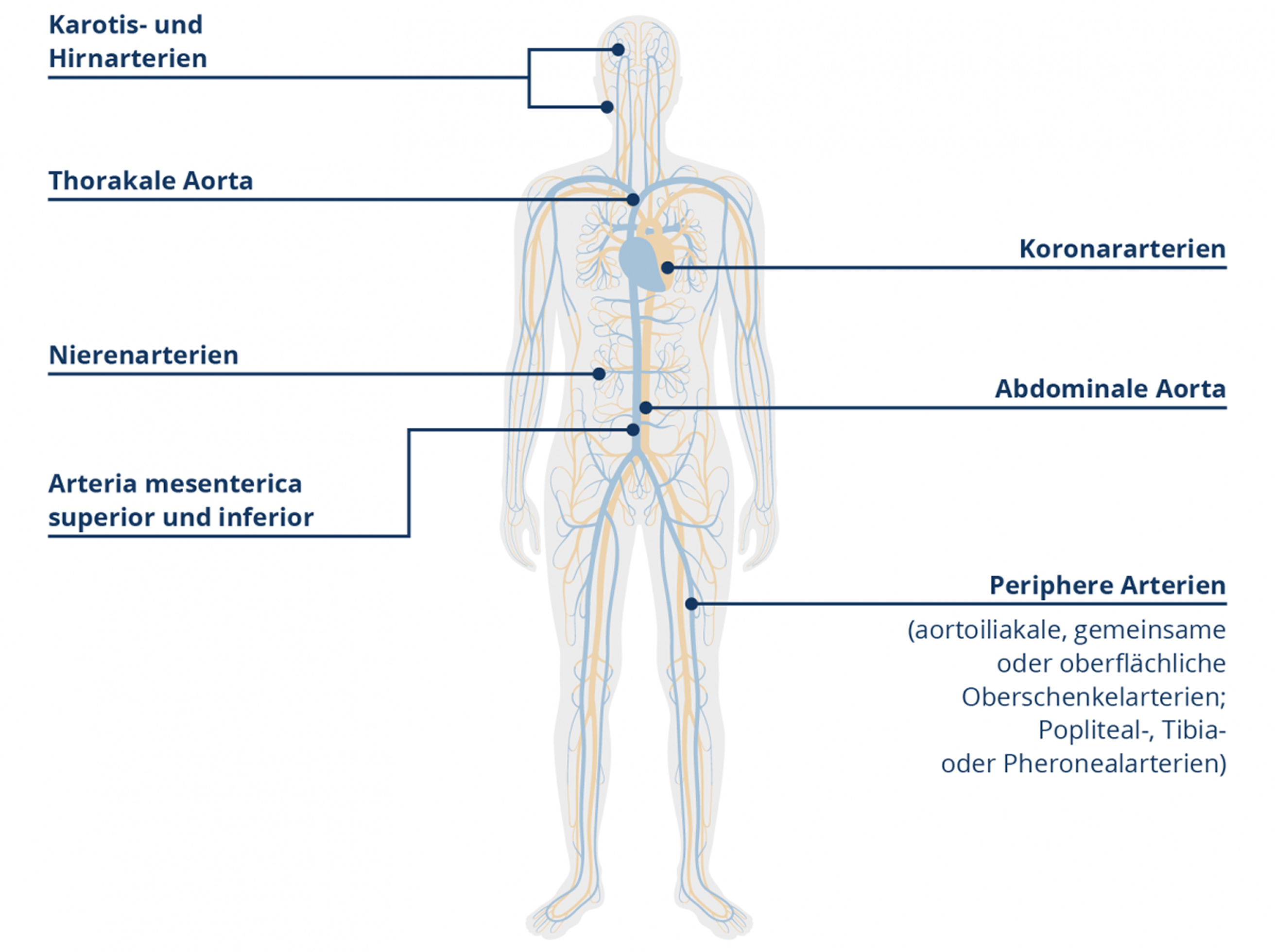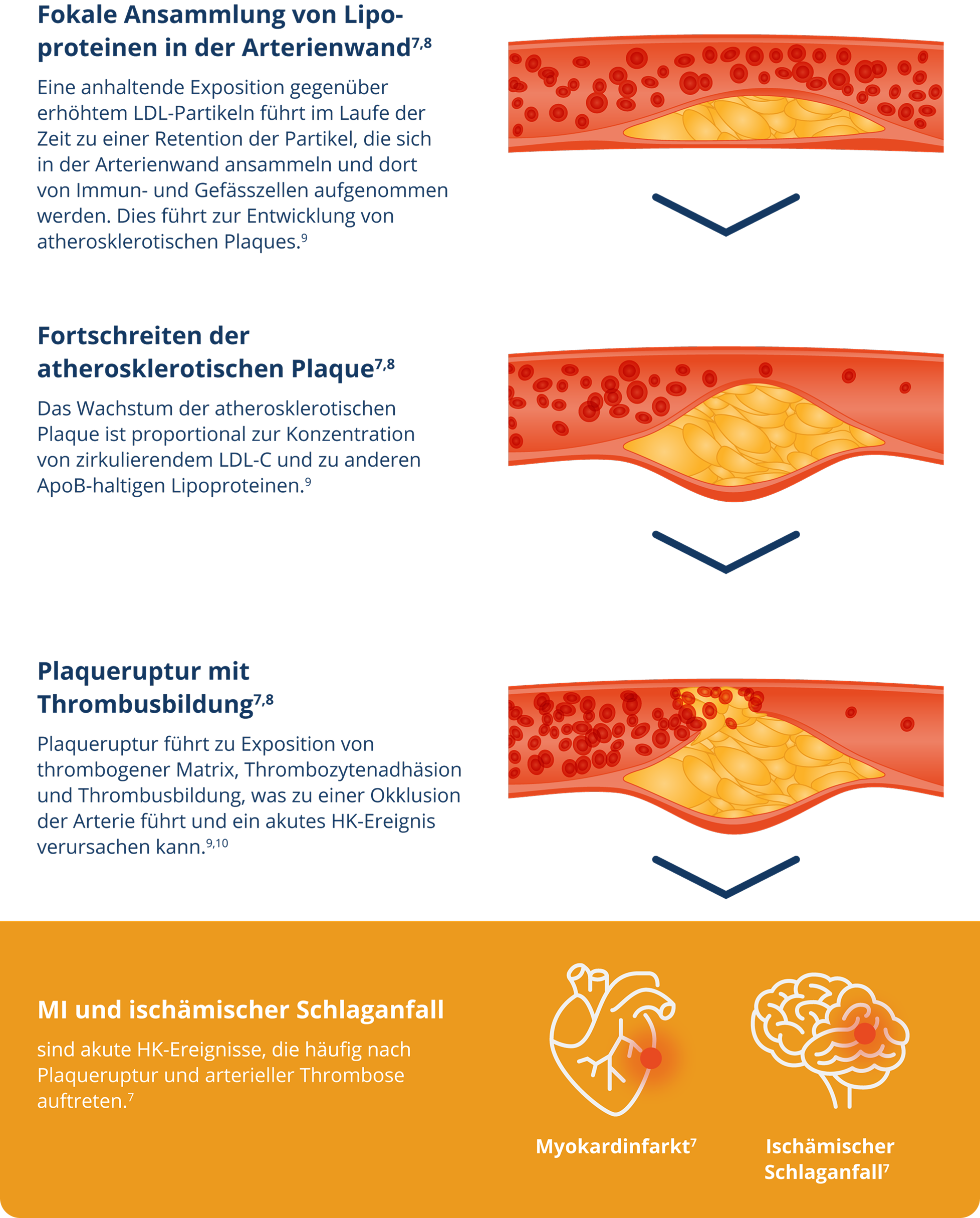Image

Manifestationen der Herz-Kreislauf-Erkrankungen
Image

Klinische Manifestationen von Atherosklerose, Abbildung modifiziert nach Referenz 7
Referenzen
- Herrington, W., et al., Epidemiology of atherosclerosis and the potential to reduce the global burden of atherothrombotic disease. Circulation research, 2016. 118(4): p. 535–46.
- Braunwald Eugene, Z.D., Libby Peter, Heart Disease: A Textbook of Cardiovascular Medicine. Assessment of normal and abnormal cardiac function, ed. p. 479–502. 2001, Philadelphia: WB Saunders Company.
- Arnett, D.K., et al., 2019 ACC/AHA guideline on the primary prevention of cardiovascular disease: a report of the American College of Cardiology/American Heart Association Task Force on Clinical Practice Guidelines. Journal of the American College of Cardiology, 2019. 74(10): p. e177–e232.
- Ray, K.K., et al., The ACC/AHA 2013 guideline on the treatment of blood cholesterol to reduce atherosclerotic cardiovascular disease risk in adults: the good, the bad and the uncertain: a comparison with ESC/EAS guidelines for the management of dyslipidaemias 2011. European Heart Journal, 2014. 35(15): p. 960–68.eren
- Corrado, D., et al., Non-atherosclerotic coronary artery disease and sudden death in the young. Heart, 1992. 68(12): p. 601–07.
- Knickelbine, T., et al., Identification of unexpected nonatherosclerotic cardiovascular disease with coronary CT angiography. JACC: Cardiovascular Imaging, 2009. 2(9): p. 1085–92.
- Libby, P., et al., Atherosclerosis. Nat Rev Dis Primers, 2019. 5(1): p. 56.
- Libby, P., Ridker, P.M., and Hansson, G.K., Progress and challenges in translating the biology of atherosclerosis. Nature, 2011. 473(7347): p. 317–25.
- Ference, B.A., et al., Impact of Lipids on Cardiovascular Health: JACC Health Promotion Series. J Am Coll Cardiol, 2018. 72(10): p. 1141–56.
- Badimon, L., and Vilahur, G., Thrombosis formation on atherosclerotic lesions and plaque rupture. Journal of Internal Medicine, 2014. 276(6): p. 618–32.
Novartis stellt die aufgeführten Referenzen auf Anfrage zur Verfügung
